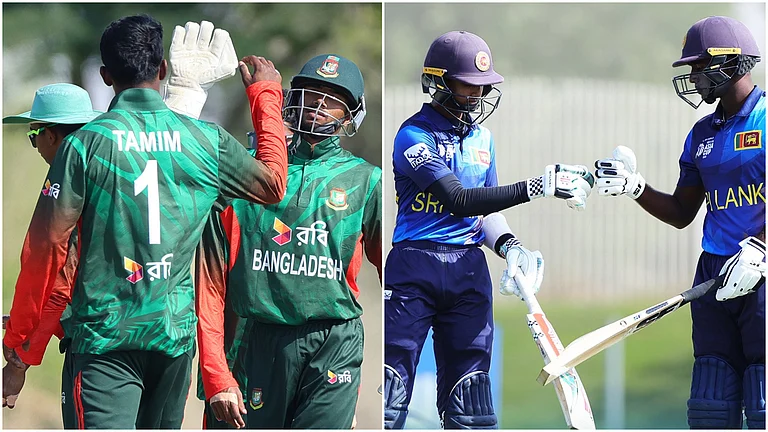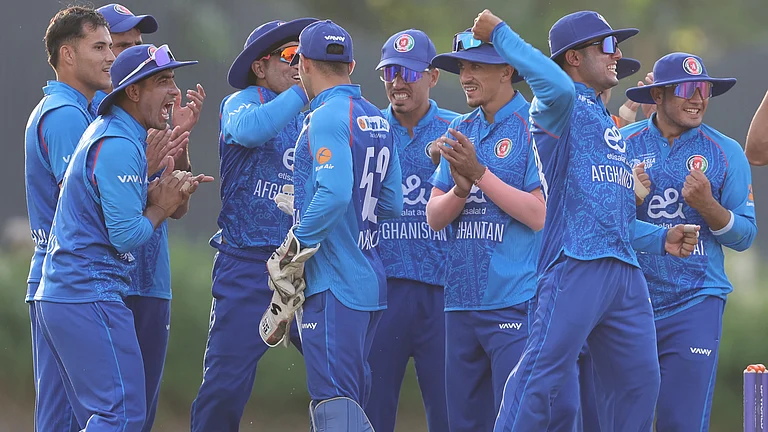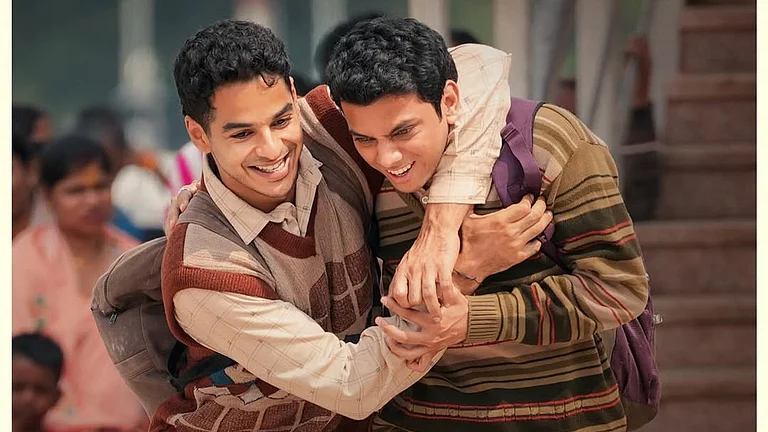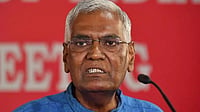- It wasn’t AAP’s success in the Delhi assembly polls nor the Ghar Bachao Ghar Banao Andolan cause that led Medha to join. “There has to be a counter to Modi.”
- Rues the EC strictures, which prohibit posters on autos, among other things. Lack of funds is another dampener, compared to lakhs others are spending.
- Medha’s rallies are organised with the help of AAP volunteers and a ragtag group of locals she has worked with during movements she led in the past.
- Her slogans are derived from the rights tradition: ‘Hamein satta nahin, satya chahiye’; ‘Matya deya, hakka leva’.
***
Long before the assembly elections in Delhi, long before Medha Patkar would contest elections from Mumbai North East and the Ghar Bachao Ghar Banao Andolan (GBGBA) would put its might behind their cause, Santosh Thorat waged an inner battle vis-a-vis the Aam Aadmi Party. A conflict that was visible, just about a year earlier, in an Irani restaurant in Bandra. Would he want his politics—of strong, community-driven movements, women’s participation, Ambedkarite leanings, harking to a legacy going back to Bhagat Singh and Annabhau Sathe—to be diluted by becoming a footsoldier of a political party than remain a leader of the people?
The questions stand resolved today as he holds meetings with group after group of women, exhorting them to get at least 10 votes for Medha Patkar and the AAP. Sometime ago, when Medha had held a public meeting to decide whether or not to join electoral politics, Thorat had waited patiently for his turn to speak on stage. When he did, he made his point succinctly: “Tayi khud nahin khadi hui hai, unhein hamne khada kiya hai, hamara kaam karne ke liye (Medha hasn’t stood for elections on her own, we have asked her to do so, to get our work done).”
Thorat is one of the leading faces of GBGBA, a movement that was born out of Mumbai’s infamous demolition drives in 2004-05. Close to 80,000 homes were destroyed in Mankhurd, forcing its women to band together to resist the onslaught of the bulldozers. It was at this point that they reached out to Medha, who apparently told them that if they could get 100 women to fight, she would join them.
Medha’s electoral campaign today is an extension of that battle. The constituency she is fighting from saw a neck-and-neck battle in the last general election, between Sanjay Dina Patil of the NCP and Kirit Somaya of the BJP, both of whom are running again. Patil pipped Somaya to the post by a mere 2,933 votes, but as one can hear at every street corner bobbing with the signature AAP topis, “In the last election, nine lakh people did not vote, this time please do.”
Her campaign strategy is simple, says Medha: “Reaching out to people. We have to resort to whatever electronic media my colleagues use, hold small meetings, work with groups that are active at the grassroots.”
The competition, of course, is unfair, especially when it comes to funding. The BJP has a front-page advertisement in the Times of India, which going by the daily’s rate of Rs 6,960 per square centimetre, would have cost Rs 11,942,360 (minus the 15 per cent discount) for the 1,716 sq cm front page space. Medha’s AAP donation website, by contrast, has collected a mere Rs 13,000 in the four days it went online. On the sixth day, a corporate lawyer from Calcutta made a contribution of Rs 1,00,000.
Electoral rules have been another dampener. “We apparently can’t even put our stickers on autos,” she says, sitting in a small AAP office set up by a small restaurant owner in Vikhroli, amid the chatter of volunteers. “We say development planning has to be face-to-face, so how can electoral campaigning not be face to face?” Five young boys, who have come from Bheem Chhaya Nagar nearby, sit with drums which they were to play on Medha’s walks through the bastis. But this too has fallen prey to the EC’s injunctions, as the police did not give them permission to play in public.
“We have to depend on social media,” Medha continues. “But there have to be very serious changes in rules and regulations set by the EC. Hoardings are allowed, on purchase basis, where parties pay lakhs of rupees, but banners are not. Raj Thackeray has put up big hoardings, lakhs and crores are spent, but those are not violations. There’s a rule that your hoardings should not face municipal land, but the road is municipal land, why is that not a violation? Do we all just point our banners to ourselves?”
She’s up early, at five in the morning, planning her day and meeting volunteers before setting out on short rallies and more meetings, on the road, at parks, at crossroads and nakas, up small bylanes in slums, in small rooms and houses of supporters of GBGBA and now AAP. A motley bunch of volunteers, some from the grassroots and others who have come down from their buildings, from across the city and from across the country. On the road with her, it’s clear that in the lower depths of the city, it’s Medha’s simplicity that strikes a chord, as well as her infectious energy.
At one such public meeting, in Rafiq Nagar 2, one of the crucibles of Ghar Bachao Ghar Banao Andolan, it’s almost a given, if bystander conversations are any window to wholesale voting patterns, that they would vote for her, even if they do not sit at the public rally where a thousand people, mostly unorganised workers, are sitting patiently, wearing the AAP topis young volunteers have distributed. Rafiq Nagar is but one settlement in Mumbai’s largest dumping ground, where children die every other month of malnutrition-related diseases, where policemen routinely harass young Muslim boys, and which has faced demolitions almost every other year. Rafiq Nagar, citadel of ragpickers; Rafiq Nagar, when it was still Rafiq Nagar 1, where some boys have still not come home after the 1992 riots.
Proceedings begin with Lok Shahir Milind Kambli from Mulund singing a rendition of Sambaji Bhagat’s Surat ko pehchano bhai, a song that attacks caste as much as corruption, that invokes Ambedkar’s dream, ridicules every political figure—from Advani to the Gandhis—and laments the blindness of those who ran after the ‘mandir’.

Photograph by Fotocorp, From Outlook 28 April 2014
The one thing AAP has done for GBGBA, whether as a blessing or curse, is bring in volunteers from the upper middle classes, the middle classes and upper castes or Savarnas, to areas once populated by the working class, the urban poor, and those who have grown up in the tradition of Ambedkar politics. Medha’s rallies at more suburban middle class areas are organised often with the help of AAP volunteers and a ragtag group of locals she has worked with in the movement. The slogans that she invokes come typically from a rights tradition: ‘Hamein satta nahin satya chahiye (We need truth, not power)!’ and ‘Matya deya, hakka leva (Give your vote, take your right’).
Medha’s speeches at all street corners speak not just of bhrashtachaar but also atyachar (atrocity). She recalls the work of the ghar bachao andolan, in exposing the Adarsh scam, the corruption in the builder lobby; the work done for unorganised workers, street hawkers, slum-dwellers; speaks of women’s participation in the community and in voting. She talks of the previous MP who apparently never asked a single question in Parliament; of the lies of every ruling party in the state that made promises to regularise slums but didn’t, to provide basic infrastructure like sanitation, power, roads and water, which many people in her constituency are deprived of. There is 30,000 acres of land free in the city, she asserts in her speeches everywhere. “Land has to be released. It is now blocked. From Bhayandar, Vasai to Mumbai, a handful of companies and a few hundred people have more than 10 acres, six companies have more than 500 to 2,000-3,000acres.”
She’s also concerned about pollution and the environment. “Polluted air does not know whether it’s flowing through slums or middle-class areas. Drainage or infrastructure, traffic or regulation on the number of cars on the road, whether there should be a skywalk or not, there is just no consultation with the people. All this clearly brings out the non-participatory and undemocratic planning on the one hand, and corruption on the other.”
It’s visibly obvious that Medha’s decision to stand for elections has not been influenced by the AAP’s assembly results, her movement or of Ghar Bachao Ghar Banao Andolan. There had to be a counter to Modi, she tells me. “The fear against him is not so strong among the people in Mumbai, but the fraud in his own presentation will have an impact. Who questions Ambani? Who questions Adani? Who questions inequality?”
Yes, there was dissent in the National Alliance of People’s Movement against her decision to stand, from “a handful of people,” as she says, mostly from Assam, Karnataka and some units from West Bengal. But the idea was to make electoral politics complementary to non-electoral politics. Medha often emphasises the role of social movements in shaping policy and law. Her vision of development is motivated by that forgotten lesson in civics textbooks: the Directive Principles of State Policy. These guidelines in the Constitution, envisaging a more equitable development that paid equal heed to ecology, environment and social justice, have remained so, ignored by most state and Central governments.
Medha’s desire to give more power to the panchayats as per Article 243 of the Constitution is also seen as playing into the caste power dynamics. But, as she insists, “Unless there is democracy at the bottom level, there is nothing; this is why becoming an MP doesn’t mean much.”
At the same time, she says, “We debate laws and policies in Parliament, that is also important. As movements we have influenced so many acts. RTI has come from social movements. And the unorganised sector workers are part of the napm, where we have had umpteen meetings with workers, ministers and officials, and drafted, reworked and brought out the act. Yet certain sections of it remain weak, like regulation and recording of labour. As movements we continue to fight; even with the Hawker’s Act, we have worked extensively on it since the Calcutta hawkers were evicted and the Hawker’s Federation came into being. We got the policy in 2003, the bill in 2009, and got it passed in 2013. And the president has still not signed it.”
There is much she wants to say, and at the end of an interview I am having with her on the sidelines, she chooses to answer a question I ask in English in Hindi, to include her eagerly listening volunteers. The interview explodes into a conversation, between AAP and GBGBA, about the suitability of certain slogans, about the importance of Ambedkar’s birth anniversary, about those who feel the Lokpal is against the Constitution and therefore against them. These people must be spoken to. Over the ruckus, an elderly aap volunteer announces that ‘Vande Mataram’ is the same as ‘Jai Bhim’. No one pays him attention.
A Mumbai-based journalist and photographer, Iqbal has reported extensively in Central India


























